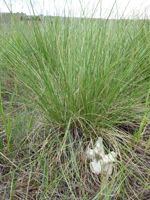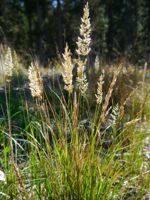Mon-Fri 9am - 5pm Mountain time
Rough Fescue vs Pinegrass
Festuca campestris
Calamagrostis rubescens
CUSTOM GROW
CUSTOM GROW
Rough Fescue is a native perennial bunchgrass valued for its tall, dense clumps and long-lived growth. Adapted to cold climates and nutrient-poor soils, it is a defining species of northern prairie and montane grasslands. In western Canada and the northern Rocky Mountains, Rough Fescue is considered a keystone species because it shapes plant communities, stabilizes soils, and supports ecosystem resilience.
It is a cool-season grass, growing most actively in spring and fall and slowing during the heat of summer. Rough Fescue is highly regarded as forage for wildlife and livestock, with elk, deer, and other grazing animals favoring it. Taller than many other fescue species, it is well-suited to prairie restoration, erosion control, and naturalization projects where it supports both biodiversity and long-term ecosystem health.
Pinegrass is a hardy, native perennial grass common in forested regions of western North America. It is an important understory species and is typically found beneath conifer canopies. Due to its spreading nature and ability to form dense mats that cover the forest floor, it helps stabilize soils and reduce erosion.
It provides forage for wildlife and livestock, shelter for small animals, and seeds for birds, playing an important ecological role in woodland ecosystems. Pinegrass is well-suited for ecological restoration, soil stabilization, and naturalization projects.

